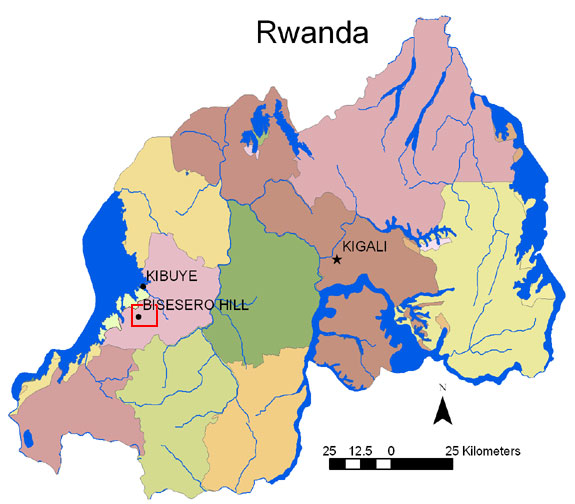Rwanda Project
The genocide in 1994 was perhaps the most clear-cut case of genocide since the Holocaust: as certain actors made clear the intent to destroy the Tutsi population, hundreds of thousands were killed. Hundreds of thousands more were raped, maimed, or otherwise traumatized. As much as 90% of Rwanda’s pre-1994 Tutsi population (which was estimated to comprise about 14% of the country’s total population) was murdered. The extermination effort took place within the context of a renewed civil war, but much of the carnage involved civilians far away from the front lines. Indeed, the government of Rwanda appeared to have diverted substantial military resources from the front lines to the effort to slaughter civilians.
The basic contours of the genocide are well-known. A three-year civil war pitting the predominantly Tutsi Rwandan Patriotic Army (RPA) against the predominantly Hutu government (the Rwandese National Movement for Democracy and Development, or MRNDD) and its forces had ended in a peace agreement, The Arusha Accord, in August of 1993. The accord called for the creation of a transitional government incorporating elements of the incumbent regime, the Rwandan Patriotic Front (the political wing of the RPA), and the mixed ethnic domestic opposition. It also provided for a UN force of oversee the transition. However, after months of negotiations and false starts, the parties failed to agree on the specific make-up of the transitional regime. When a plane carrying the president of Rwanda, Juvenal Habyarimana, was shot down from the sky as it returned from negotiations over the transitional government on April 6, 1994, organized street violence quickly ensued. Hardliners –i.e., those who had most resisted partnership with the rebels – maneuvered to gain control of the government, not least by assassinating the incumbent, Agatha Uwilingiyimana, a Hutu who had favored the implementation of the accord. Soon, government forces (including the army and the presidential guard), along with non-governmental allies (generally affiliated with political parties, such as the infamous interahamwe – the youth wing of MRNDD) were targeting both political rivals and Tutsi civilians. Many of the intended targets congregated in places where they believed they would be safe, such as churches, government buildings, and factories. Instead, those locales became massacre sites, as government forces, militia members, and other members of the civilian population attacked them en masse.
The genocide only ended when the RPA rebels, who had abandoned the peace agreement themselves on April 8, gained control of Kigali and all government offices in July of 1994. Hundreds of thousands of RPA supporters began to enter the country from Uganda another neighboring areas, meaning that a substantial portion of the Tutsi population that had been killed was “replaced” by a Tutsi population returning from exile. For its part, the interim government that had overseen the genocidal effort tried to flee to neighboring Zaire, while bringing over a million, mostly Hutu refugees with it.
Among the issues that Rwanda has had to deal with since the genocide are the status of ex-government forces and refugee populations in neighboring countries, the pursuit of justice for crimes committed during (and as part of) the genocide, and the political, economic, and social reconstruction of a country devastated by intense conflict.

The Genocide Studies Program’s Rwandan Genocide Project was founded in 2002, and began with a study of how GIS imaging revealed indications of genocide in the western part of the country. After lying dormant for several years, it has recently been revived under the director ship of David Simon. The project serves as a resource for students and educators studying Rwanda and the 1994 genocide. A central focus of the project is the preservation of documentation and testimonies related to the genocide.
Other GSP-sponsored research on Rwanda
phd dissertations
- Charles Mironko, GSP Associate Director, Social and Political Mechanisms of Mass Murder: An Analysis of Perpetrators of the Rwandan Genocide, Yale University, Department of Anthropology, submitted March 2004.
- Philip Verwimp, GSP Visiting Fellow (1999, 2002-04), Development and Genocide in Rwanda: A Political Economy Analysis of Peasants and Power under the Habyarimana Regime, Catholic University of Leuven, Belgium, 2003.